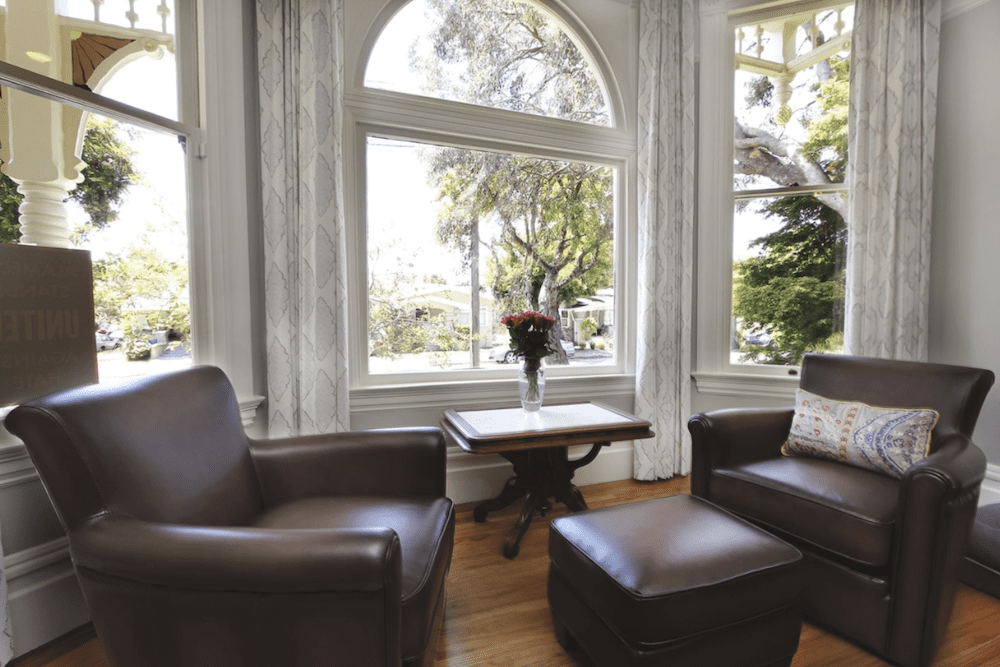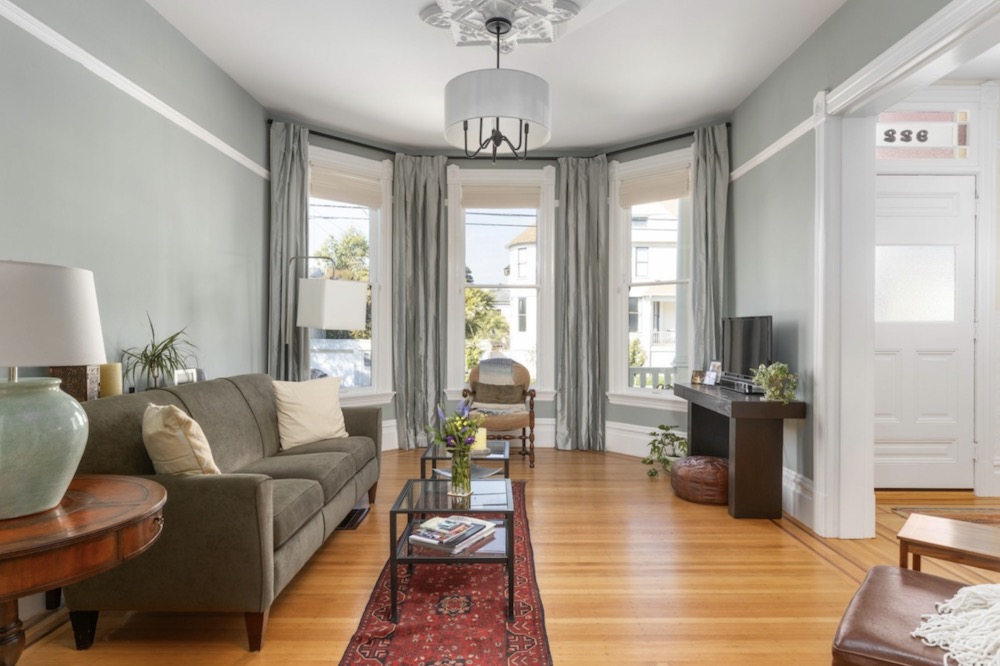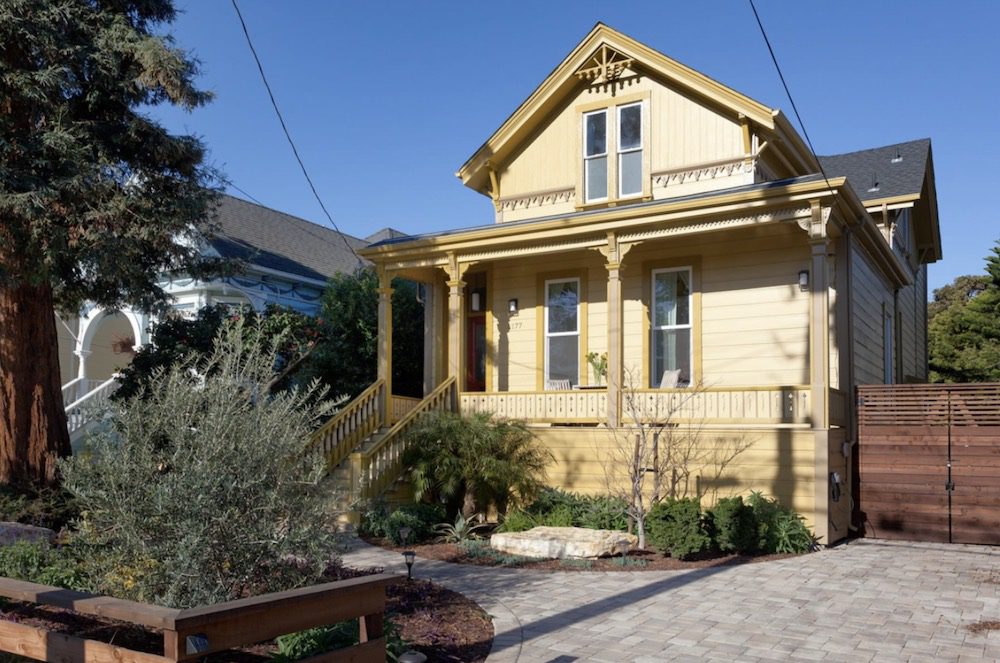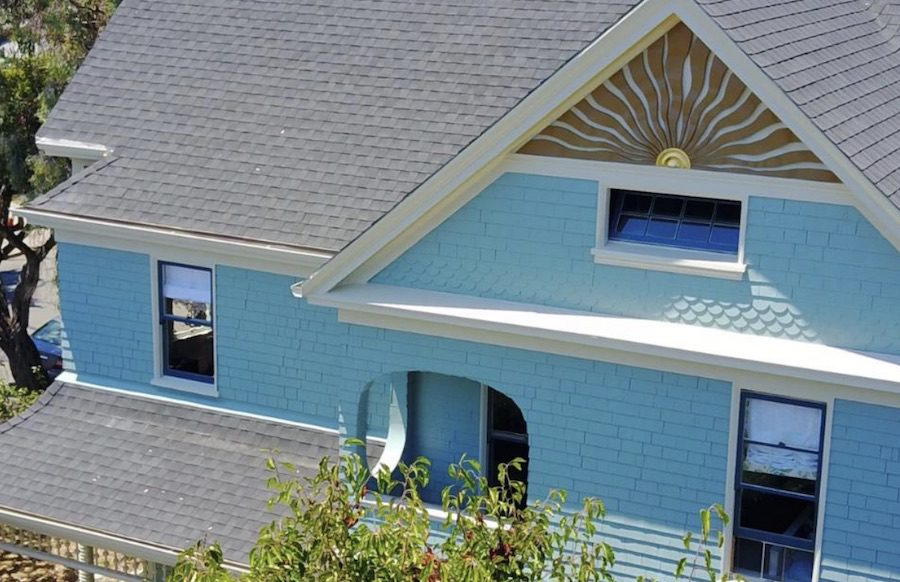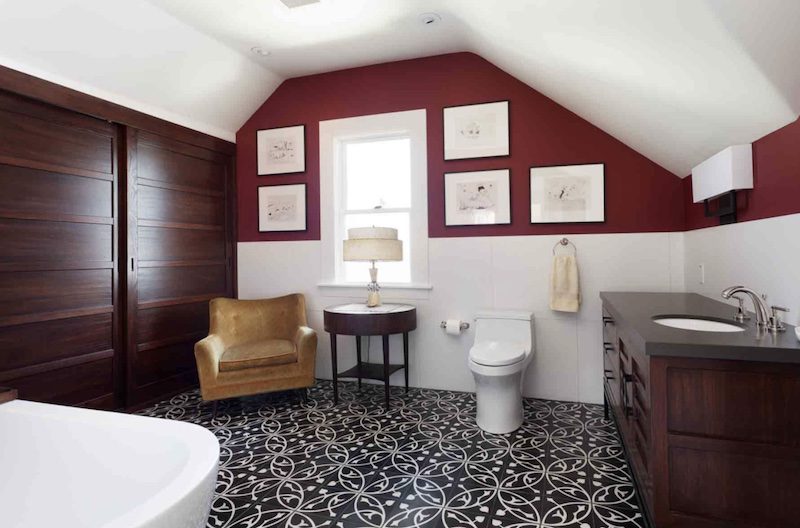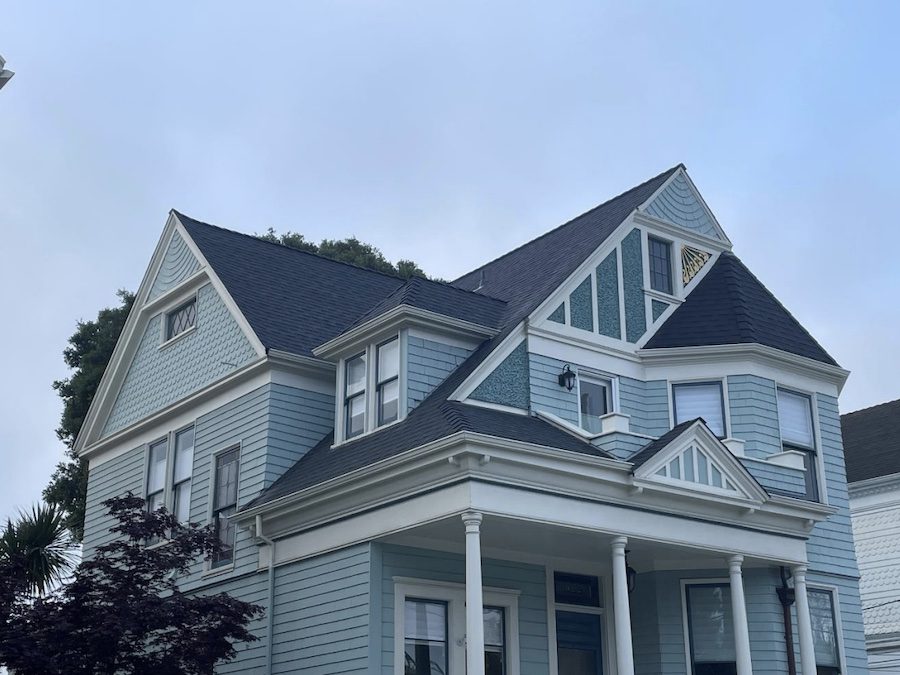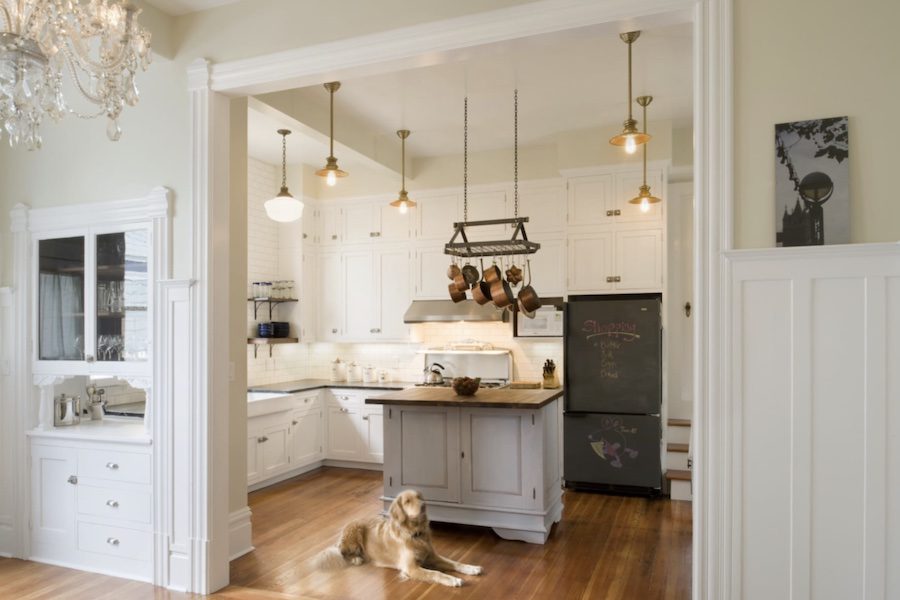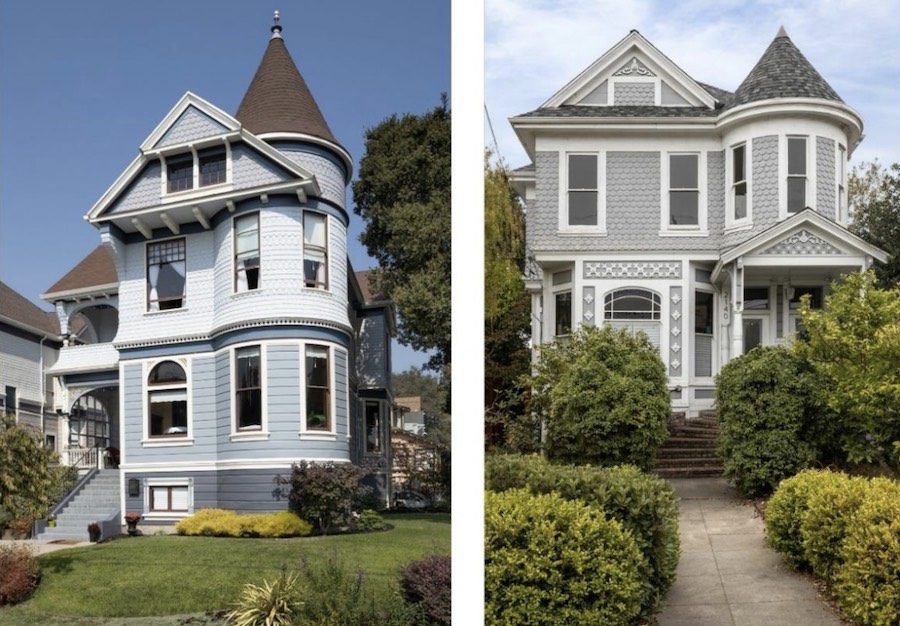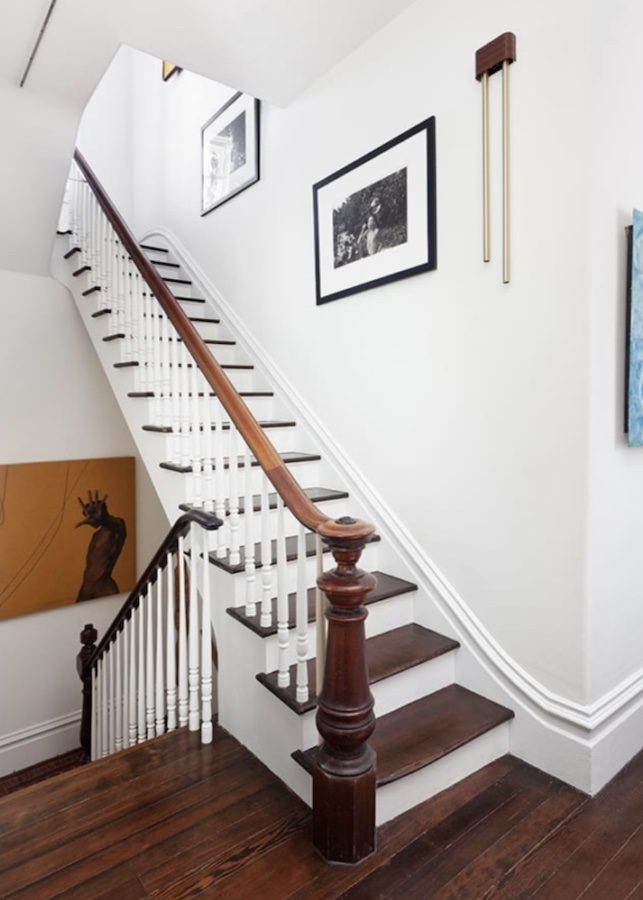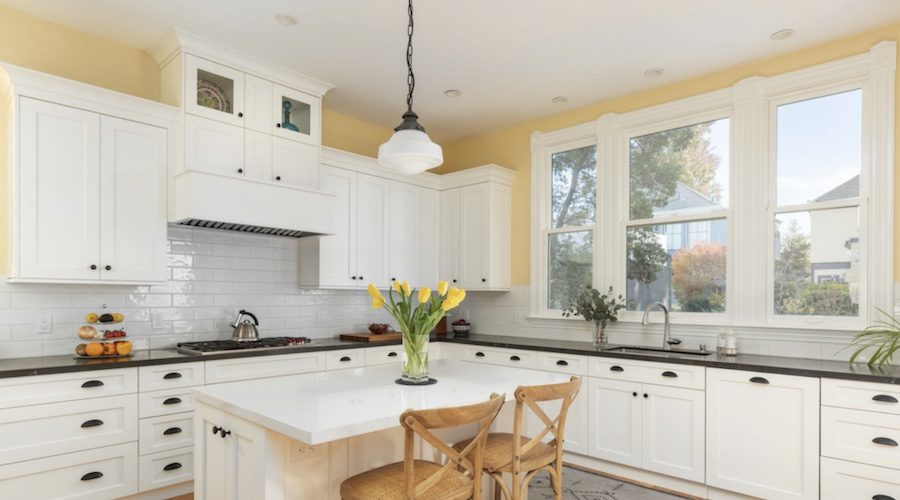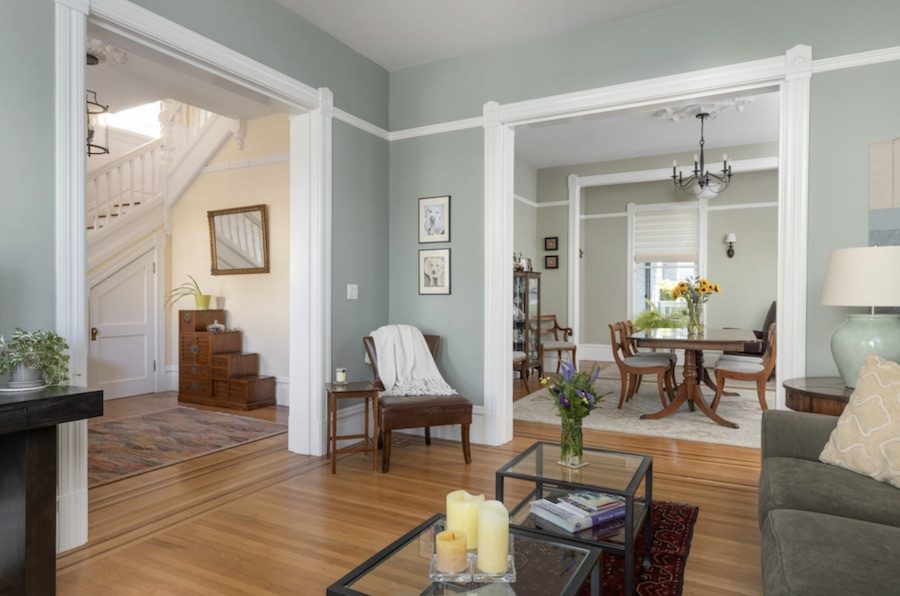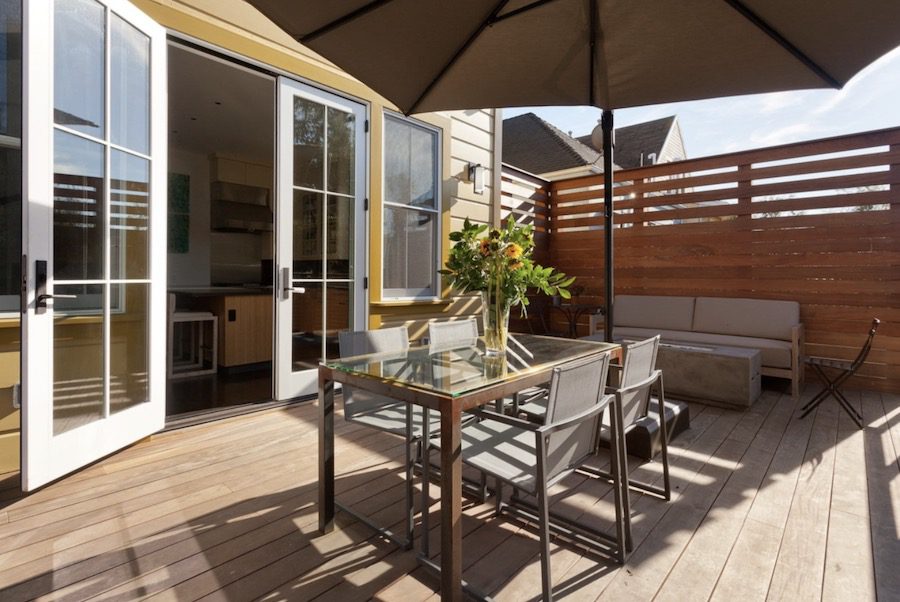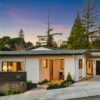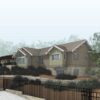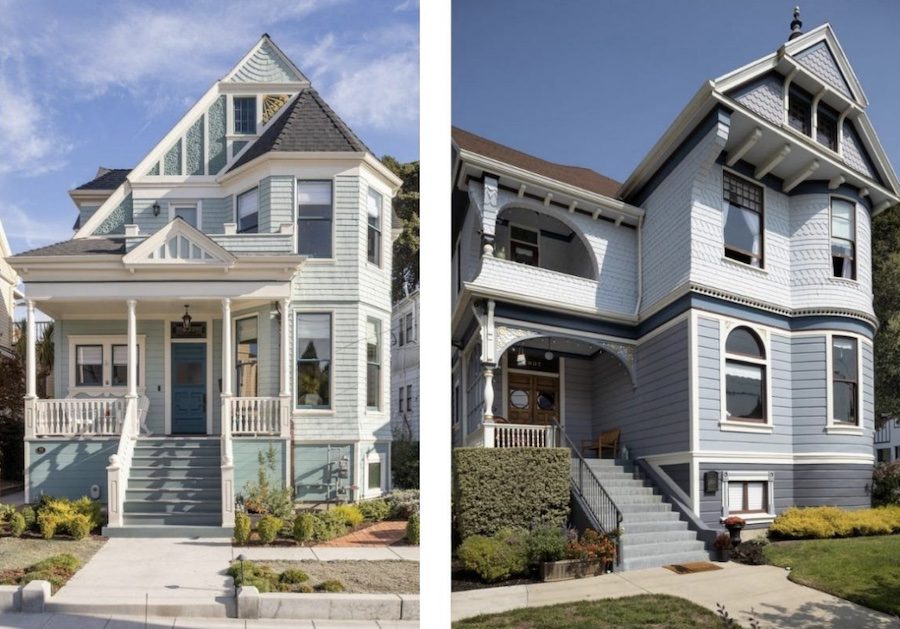
Victorian homes across the Bay Area are attracting renewed interest from homeowners drawn to maximalism and Grandmillennial design trends. These architectural treasures, with their elaborate woodwork and distinctive period details, present both opportunities and obstacles for contemporary living.
The reality behind the ornate facades tells a different story. Many historic Victorian era properties throughout San Francisco, Oakland, Berkeley and Alameda are structurally compromised and need extensive work. Century-old construction methods and materials create homes that may look impressive but often require significant intervention to meet today’s living standards. The architectural bones might be appealing, but the underlying systems frequently need major attention.
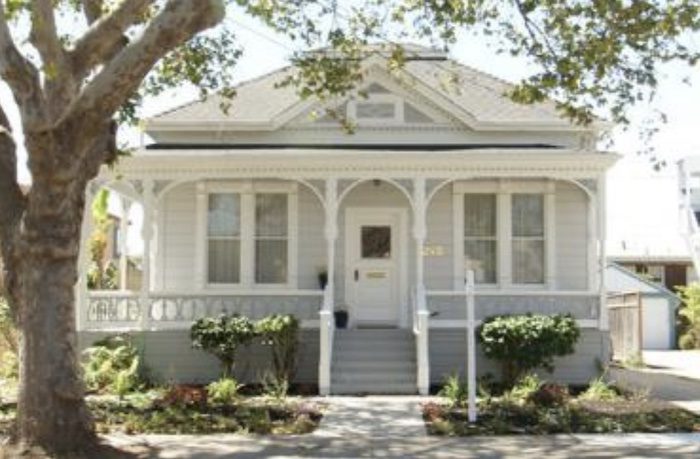
Successful Victorian renovations require a careful balance between preservation and modernization. Original elements like crown moldings and period fireplaces deserve protection, while outdated systems demand contemporary solutions. Working within existing building footprints helps avoid lengthy planning approvals, making specialized knowledge essential for these projects.
Whether you’re dealing with narrow Victorian townhouses or expansive Queen Anne styles, each renovation brings unique challenges that require both the technical expertise of an architect and a healthy respect for historical character.
Understanding the Victorian Home’s Original Character
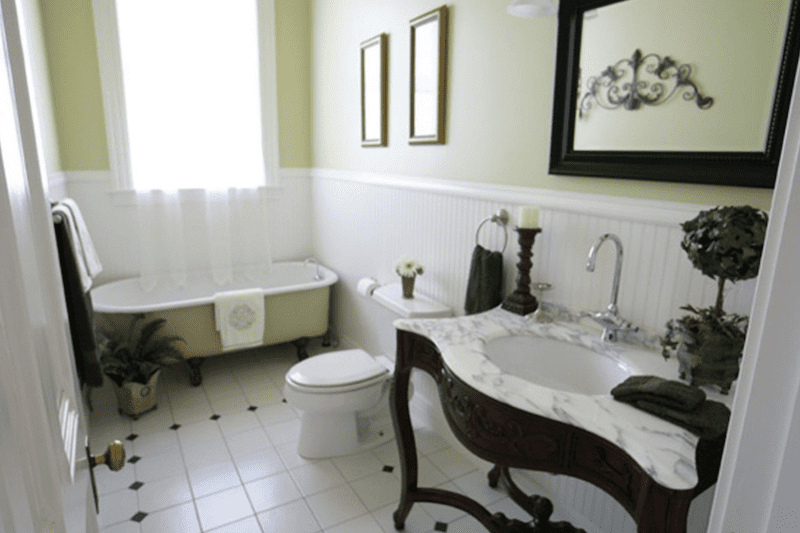
The Victorian era (1837–1901) created an architectural legacy that continues to captivate homeowners today. These distinctive properties speak a unique design language that reflects the prosperity, technological advances and cultural values of 19th-century Britain and America. Understanding this architectural vocabulary is essential for anyone considering a Victorian home renovation.
Contact Saikley ArchitectsWhat defines Victorian architecture?
Victorian architecture encompasses several distinct styles that evolved throughout the period, notably Gothic Revival, Italianate and Queen Anne. These homes typically feature asymmetrical facades, complex roof structures and a wealth of decorative elements. Gothic Revival embraces pointed arches and steep gables, whereas Italianate styles showcase low-pitched roofs with wide eaves and ornamental brackets. Queen Anne homes, perhaps the most recognizable Victorian style, boast decorative woodwork, wraparound porches and textured wall surfaces.
What truly sets Victorian architecture apart is its celebration of craftsmanship and ornamentation. These homes were built during a time when machine-made building components first became widely available, essentially allowing builders to incorporate previously prohibitively expensive details into middle-class homes. The Industrial Revolution made possible the mass production of decorative elements that defined the era’s exuberant architectural expression.
Why historical integrity matters
Preserving a Victorian home’s original character goes beyond aesthetics—it maintains a tangible connection to our architectural heritage. Homes with intact historical elements typically command higher market values, as buyers increasingly seek authentic period details alongside modern amenities. Additionally, maintaining historical integrity often proves more sustainable than wholesale renovation. Original materials like old-growth timber and hand-crafted elements possess quality and durability rarely matched by contemporary alternatives. Architects specializing in period renovations can identify which elements deserve preservation and which can be respectfully updated, creating a harmonious blend that honors the past while embracing present-day living.
Start with What You Have: Assessing Your Victorian Home
A comprehensive assessment forms the foundation of any successful Victorian renovation. This evaluation process involves cataloging both the architectural treasures and the challenges that define these historic properties.
Identifying original features worth saving
Victorian-era construction materials typically surpass modern building standards in both quality and durability. These materials often respond well to restoration even after decades of neglect. Focus your attention on key architectural elements: sash windows, original fireplaces, crown molding, decorative woodwork and period trim details. Preserving these features adds both character and monetary value to your property.
Pay attention to smaller details that define Victorian craftsmanship: Decorative ceiling roses, cornices, wide-plank wood flooring and original mosaic tiles represent the era’s attention to detail. Bay Area homes often feature stained glass elements that warrant special consideration during renovation planning.
Understanding structural limitations
Victorian floor plans reflect the era’s lifestyle preferences. These homes feature compartmentalized spaces – music rooms, libraries, formal parlors – rather than today’s open-concept designs. Decisions need to be made about whether to keep the compartmentalization or open the spaces up to each other; often there there is a way to keep the character of the home while making a more open floor plan.
Foundation issues present common challenges. Many Victorian homes rest on shallow foundations that contribute to settling and structural movement over time; these issues can be corrected along with the rest of a renovation. Plumbing placement creates another consideration, as bathrooms were typically positioned at the rear of houses in a period when indoor plumbing was a new amenity.
Common issues in Bay Area Victorian homes
Moisture problems plague many Bay Area Victorian properties due to regional climate conditions. Rising damp affects ground-level walls lacking proper moisture barriers – a technology that became standard only after 1900. Water penetration can cause structural and finish deterioration.
Energy efficiency presents ongoing concerns, and electrical systems require immediate attention in many properties. Knob-and-tube wiring remains common in pre-1950s construction and poses significant fire risks. Complete electrical updates are recommended for homes built before 1950.
Planning a Thoughtful Victorian House Renovation
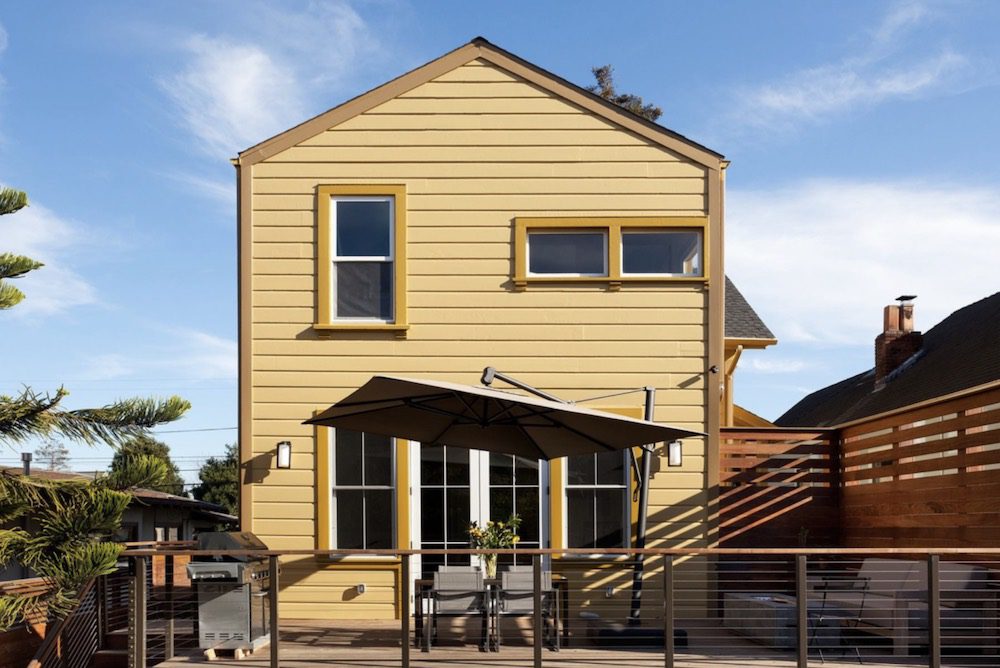
Assessment alone won’t renovate your Victorian home. Planning determines whether your Bay Area property retains its historic character while meeting contemporary needs.
Working with an architect: Why it matters

Professional guidance is essential for Victorian renovations. Bay Area historic homes contain unique architectural elements that require specialized knowledge to preserve them appropriately. An experienced understanding of historic structures proves invaluable during complex renovations.
Qualified architects create detailed plans that balance preservation with necessary updates. For San Francisco and Alameda Victorian homeowners, architectural expertise helps navigate the complex relationship between historic preservation and modern functionality – something DIY approaches typically cannot achieve effectively.
Navigating Bay Area building codes
Victorian homes often face specialized regulations designed to protect their historical significance. The California Historical Building Code (CHBC) provides alternative building regulations specifically for historic structures, facilitating restoration while preserving original architectural elements. California has maintained different versions of this code since 1979, addressing fire protection, safety measures, structural regulations and preservation requirements. Early engagement with historic preservation specialists can help identify potential limitations before design work begins, preventing costly redesigns.
Setting a realistic budget and Timeline
Historic renovations exceed both budget and timeline expectations more often than standard projects. Establish a budget that includes building materials, fixtures, specialist fees and permit costs. Include a substantial contingency fund – Victorian homes frequently hide surprises behind century-old walls.
Timeline considerations:
• Period-appropriate materials require longer sourcing times.
• Specialized permits involve extended approval processes.
• Delicate restoration work cannot be rushed.
Design Strategies That Balance Old and New
Creating harmony between historical elements and contemporary needs requires deliberate design strategies that respect the home’s architectural legacy. The successful integration of modern features without sacrificing period character becomes an art form that honors both past and present.
Preserving facades and millwork
Victorian renovations succeed when original architectural details take priority. For example, preservationists can replicate decorative trim, restore original door hardware and service original windows while replacing 1970s aluminum windows with period-appropriate replicas. These elements contribute significantly to a home’s historic character and deserve priority in every Victorian preservation project.
Bay Area Victorian homes feature particularly ornate details worth protecting. Intricate cornices, baseboards, fireplaces, mantels and decorative paneling define these homes’ character. Where original details suffer damage, skilled craftsmen can create custom pieces that match the original design, ensuring the home maintains its historical integrity.
Smart layout changes for modern life
Modern families need open, multifunctional spaces that Victorian floor plans rarely provide. One example is to remove non-load-bearing walls between the kitchen, breakfast nook and family room, creating an open area that connects to an outdoor deck through large patio doors.
The key lies in understanding spatial hierarchy. Primary spaces – formal rooms with distinctive architectural features – should be preserved, while secondary spaces can accept greater modification.
Custom solutions for awkward spaces
Victorian homes frequently contain unusual niches and awkward areas that require creative thinking. An architect can transform these challenging spaces into valuable assets. For example, an odd niche in a hallway could be converted into a functional custom bar with built-in refrigeration. Or a small, purposeless room could be transformed into a stylish home office and personal sanctuary. Even areas under stairs can be redesigned as wine cellars or display areas rather than remain as wasted space.
Lighting and ventilation improvements
Victorian homes often struggle with poor ventilation and inadequate lighting. Energy Recovery Ventilators (ERVs) offer an effective solution, capturing up to 91% of heat in outgoing air and returning it to the interior while improving air quality and energy efficiency. These systems help address the condensation and mold issues that frequently plague older homes with improved insulation.
Lighting requires a thoughtful approach that honors Victorian traditions. Period interiors often featured several small pools of light created in each room, next to chairs and over tables. Contemporary renovations can honor this tradition through dimmable fixtures with warm color temperatures (around 2700K) to mimic candlelight’s golden glow.
Many older Victorian properties suffer from limited natural light due to narrow corridors, small windows and compartmentalized rooms. This challenge is especially pronounced in middle rooms that lack direct access to windows. Innovative solutions include adding skylights, which can flood internal spaces with natural light, or installing large bay windows.
For Victorian terraced houses, creating light-filled extensions at the rear proves particularly effective. Incorporating bi-fold doors allows for indoor-outdoor living. Simultaneously, slanted roofs with rectangular skylights can make kitchens and other enclosed spaces feel more spacious and airy.
Storage and utility limitations
Unlike modern homes, Victorian houses were built when people owned significantly fewer possessions. Storage presents a genuine challenge—Victorian women typically owned only two to three day dresses and one evening dress. Today’s homeowners face the dilemma ofowning, for example, a spacious 4,700-square-foot Victorian home yet feeling as if they have nowhere to store their many belongings.
Creative storage solutions include:
- Built-in window seats with storage beneath
- Custom cabinetry designed to match period details
- Repurposed furniture pieces for additional storage
- Dedicated utility areas
Material choices that honor the past
Authentic renovations depend on materials that complement the home’s era. For roofing, composite materials that mimic the original clay tiles or slate or wood shingles remain the most historically accurate options while being appropriate to meet modern day structural and fire safety requirements. Interior plasterwork deserves restoration rather than replacement when possible. If plaster may be restored in some cases, or replaced with finishes that look similar visually.
Flooring presents opportunities to showcase Victorian character. Uncovering original floorboards offers an inexpensive way to restore period authenticity. For bathrooms and kitchens, subway tile, clawfoot tubs and vintage-style fixtures provide modern functionality while maintaining period-appropriate aesthetics.
Wallpaper, once the most important element of Victorian interior décor, remains an excellent bridge between periods. Modern homeowners can honor this tradition through classic patterns like damask or botanical prints while choosing contemporary colors schemes. For maximum impact, install wallpaper between dado and picture rails as Victorians typically did, creating a historically accurate yet fresh effect.
Inspiration from San Francisco and Alameda projects
Bay Area renovations demonstrate successful approaches to balancing old and new. Alameda features around 4,000 structures on the historic building study list, with nearly half being Victorians. These homes, primarily in Queen Anne and Stick-Eastlake styles, showcase the region’s architectural heritage.
Making It Yours: Style, Function, and Comfort
Your renovated modern Victorian house becomes truly personal through interior design choices that honor historical character while supporting contemporary living and incorporating modern conveniences. Once structural work concludes, you can focus on creating spaces that reflect both the home’s heritage, incorporating Victorian details, modern materials and your family’s needs.
Choosing a cohesive interior style
Modern Victorian house design works best through intentional contrast between period elements and contemporary features. A Victorian chandelier above polished concrete floors creates visual interest, while ornate woodwork alongside sleek appliances demonstrates how old and new can coexist. This approach works even in smaller spaces – a vintage record player next to modern speakers in a minimalist setting can make a strong design statement.
Color palettes that respect Victorian roots
Victorian interiors featured rich, saturated colors that created drama and sophistication. Authentic Victorian color schemes include:
- Deep reds like burgundy and maroon for warmth and richness
- Dark greens inspired by nature and Gothic Revival influences
- Strong blues as foundation colors for walls and textiles
Pair these historical colors with lighter neutrals like cream or warm white rather than stark modern tones. Bay Area homeowners are rediscovering these period-accurate palettes while incorporating contemporary elements for updated appeal.
Modern furniture in historic spaces
Victorian and contemporary furniture can create compelling combinations when thoughtfully paired. A tufted Victorian settee near a sleek glass table demonstrates how different eras can complement each other. Choose bright colors or patterns for simple furniture shapes, while selecting neutral fabrics for pieces with intricate details. This strategy preserves the elegance of period architecture while adding comfort and function.
Incorporating art and personal style
Art becomes a powerful tool for bridging eras in Victorian homes. Contemporary abstract pieces against traditional wallpaper or ornate moldings create compelling visual contrasts. Gallery walls mixing vintage portraits with modern prints reflect the Victorian passion for collecting while expressing modern personal style. Museums have successfully employed this strategy, placing modern installations within historic rooms to activate otherwise static spaces.
Creating family-friendly zones
Today’s families need spaces that accommodate everyone’s activities. Successful Bay Area Victorian renovations often include children’s areas with creative features like accessible loft spaces. Consider multifunctional rooms – a pantry that doubles as a prep kitchen or a porch with retractable screens for year-round use.
Outdoor spaces: Gardens, decks and play areas
Victorian outdoor areas combine period elegance with modern practicality. Wrought iron furniture, decorative planters and climbing roses create an authentic Victorian garden atmosphere. Decks and patios can blend historical materials with contemporary amenities like fire features or outdoor cooking areas. These spaces extend your home’s living area while maintaining Victorian character and supporting modern entertaining needs.
The Bottom Line
Victorian house renovation represents both opportunity and responsibility. These Bay Area architectural treasures offer unique character that modern construction cannot replicate, but they demand careful stewardship to preserve their historical integrity and Victorian charm while meeting contemporary needs.
Professional expertise makes the difference between successful restoration and costly mistakes. Architects specializing in historic preservation understand the complexities of working with century-old structures, from navigating specialized building codes to sourcing period-appropriate materials. Their guidance helps avoid the pitfalls that frequently derail DIY Victorian projects.
Budget planning requires an honest assessment of both visible and hidden challenges. Victorian homes hide surprises behind their walls – outdated wiring, structural issues or damaged original features that weren’t apparent during the initial inspection. Setting aside substantial contingency funds and approaching timelines with flexibility helps manage these inevitable discoveries.
The most successful modern Victorian house renovations find harmony between preservation and thoughtful updates. Original architectural details like ornate millwork and period fireplaces deserve priority, while contemporary systems and layouts can be integrated thoughtfully. This balance creates homes that honor their heritage while supporting modern family life.
Your renovated modern Victorian house should ultimately reflect your lifestyle while respecting its architectural legacy. Period-appropriate materials and historically accurate color palettes maintain authenticity, but modern conveniences and updated layouts make these homes truly livable. The goal is creating a space that feels both historically significant and thoroughly comfortable for everyday use.
Victorian homes in San Francisco, Oakland, Berkeley and Alameda and throughout the Bay Area represent irreplaceable cultural assets. When approached with realistic expectations, adequate budgets and professional guidance, these architectural gems can absolutely accommodate 21st-century living while preserving their distinctive character for future generations.
Contact Saikley Architects
